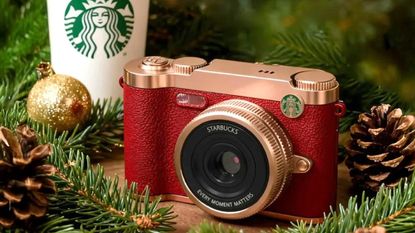Cameras
The latest Cameras breaking news, comment, reviews and features from the experts at T3
Explore Cameras
-

DJI’s smallest Neo drone has fallen to its Black Friday price – and it’s less than £145
Looking for that last-minute Christmas gift? This could be it
By Bryony Firth-Bernard Published
-
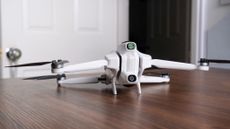
Antigravity A1 review: Immersive flying meets 8K 360 video capture
360 degrees of sky-high fun, with a premium twist
By Matt Kollat Published
-

Sony's new A7 V camera offers a solid upgrade on one of the most popular cameras around
The power of AI helps make the A7 V an unmissable prospect
By Sam Cross Published
-

The retro compact camera I carried with me all summer is cheaper for Black Friday
If I didn't already own one, I'd be buying one at this price!
By Sam Cross Last updated
-

DJI Mini 5 Pro hits its lowest price yet with a rare first-time discount for Cyber Monday
Mini 5 Pro sheds £70 of its asking price
By Matt Kollat Published
-
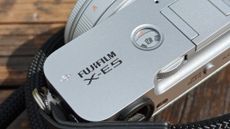
'Better than the Fujifilm X100VI' – my dream camera is on sale for Black Friday, but I might be swayed by something different
I can't believe the deals available on the Fujifilm X-E5 – but is it the right camera to buy?
By Sam Cross Last updated
-

DJI’s affordable Mini 3 drone just got even cheaper in this tempting Cyber Monday deal
A great choice for new pilots or if you're on a budget
By Bryony Firth-Bernard Published
-

Forget GoPro – this premium DJI action cam has fallen to its lowest price for Black Friday
The Osmo Action 5 Pro has never been this cheap, but it won’t last
By Bryony Firth-Bernard Published
-
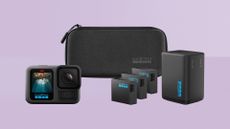
Is this GoPro’s best budget action camera bundle ever?
The brand's Hero 13 Black Extended Power Bundle is nearly half price off
By Matt Kollat Published
-

DJI's Black Friday sale is charging ahead at full speed – here's a drone editor's top picks
If I were you, I'd buy the Neo or the Flip right now
By Matt Kollat Published
-
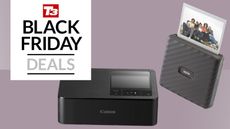
I want a home photo printing setup – but do I go with Canon or Fujifilm?
Which is the better option for printing photos at home?
By Sam Cross Published
-

I’ve been tracking this DJI drone deal for weeks – and it’s now temptingly cheap at Amazon
The DJI Mini 4K is ideal for first-time pilots, or if you're looking for a drone on a budget
By Bryony Firth-Bernard Published
-

DJI-rival selfie drone that needs no controller is super cheap for Black Friday – and fast enough to follow you on an e-bike
HoverAir's X1 drone has a max follow speed of 15 mph, and it can shoot videos in up to 4K resolution
By Matt Kollat Published
-

DJI's most capable FPV drone falls to a ridiculously low price at Amazon for Black Friday – and it shoots in 4K at 60 fps
The Avata 2 is on sale for well under £400
By Matt Kollat Published
-

DJI-rival Antigravity locks in the launch date for its A1 drone and fans of 360º action cameras will want to tune in
The brand will unveil its world-first drone in a little over a week
By Matt Kollat Published
-

DJI’s premium Action 5 Pro is now cheaper than it was last week – and Black Friday isn’t even here yet
This is the lowest price I’ve seen on the Action 5 Pro
By Matt Kollat Published
-
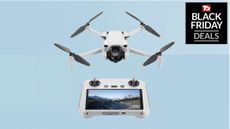
Price of DJI's sub-250g 4K drone that “can withstand windy conditions” collapses in Black Friday sale
DJI Mini 3 is £100 cheaper for the big shopping event
By Matt Kollat Published
-

DJI’s lightest and smallest drone just dropped to less than £150 for Black Friday
Delivering 4K video footage and autonomous flight modes, the DJI Neo is ideal for new pilots
By Bryony Firth-Bernard Published
-
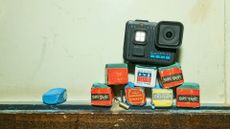
Best cheap GoPro deals for December 2025 and Black Friday: Capture the savings
Because buying the best action cams shouldn't cost the earth
By Matt Kollat Last updated
-
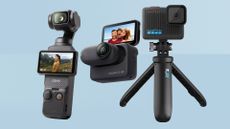
Best Black Friday action camera deals UK – GoPro, Insta360 and DJI offers hand-picked by our in-house experts
Looking for cheap action camera deals? Right this way
By Matt Kollat Published
-
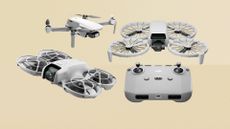
Best Black Friday drone deals UK – 10 hand-picked offers by our in-house experts
From Hoverair to DJI, here are the top drone deals in the UK worth your attention
By Matt Kollat Published
-

Leica Q3 Monochrom embraces the absence of colour
The popular camera is back with a black and white only version
By Sam Cross Published
-
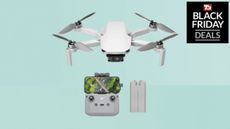
DJI's beginner-friendly 4K drone falls to lowest ever price on Black Friday
Amazon slashed the price of the DJI Mini 4K – it'll sell fast!
By Matt Kollat Published
-
![[EMBARGOED UNTIL WEDNESDAY, AUGUST 2, 2023, 15:00 CEST/14:00 BST] DJI Osmo Action 4 review](https://cdn.mos.cms.futurecdn.net/utt3hyQ7Ln7vLRELhKsLoe-230-80.jpg)
This under-the-radar DJI action camera deal has gone straight in my basket – it's not the one you think
The answer to my travelling video needs is under £160 at Amazon
By Sam Cross Published
-

Best cheap Insta360 deals for December 2025 and Black Friday
Save big on Insta360’s best cameras, from flagship 360 shooters to pocket-sized powerhouses
By Matt Kollat Last updated
-

Unexpected Black Friday price crash drops the DJI Osmo Pocket 3 to its cheapest ever price
The best vlogging camera has never been this cheap
By Matt Kollat Published
-
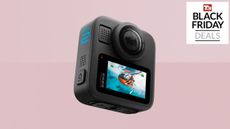
GoPro just knocked £100 off its brand-new 360° camera for Black Friday – and it’s finally tempting
The Max 2 has the highest resolution of all 36-degree action cams, and now you can own this exciting piece of tech for £100 less
By Matt Kollat Published
-

DJI Osmo Action 6 vs Action 5 Pro: worth the upgrade?
More power, more control and a whole new way to shoot, but is the Action 6 worth the extra money?
By Matt Kollat Published
-
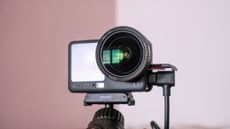
DJI Osmo Action 6 review: Is DJI’s most advanced action cam worth it?
A feature-packed, low-light-friendly action camera that pushes the series into pro territory with smarter optics and swappable lenses
By Matt Kollat Published
